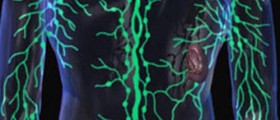Information on Salivary Glands
Salivary glands are located in the throat and mouth, and they can be divided into groups of parotid, sublingual, and submandibular glands. All these glands produce and release saliva into the mouth through the tubes, under the tongue, and through numerous different ducts located on the floor of the mouth.
The minor salivary glands can be found in the lips, the inner area of the cheeks, and all over the lining of the throat and the mouth. The saliva is used to aid in the process of digestion, protect the teeth from decay, and provide the mouth with proper levels of moisture.
Dehydration is a risk factor for all diseases that affect the salivary glands, so it is very important to ingest plenty of liquids on a regular, daily basis.

Causes of Painful Salivary Glands
One of the most common causes of problems with the salivary gland is an obstruction of the salivary flow due to the formation of stones in the glands. The glands get swollen and severely painful because the saliva cannot exit through the ducts.
These symptoms usually occur when the person is eating. Some cases may also involve certain types of infections which only worsen the situation. If untreated, the glands may even be abscessed. Different types of infections may also be involved with certain problems with the salivary glands. The most common one affects the parotid glands, and it can be characterized by swelling.
Secondary infections from the lymph nodes may also affect the salivary glands because they get inflamed and enlarged when infected. Malignant and benign tumors can develop on the salivary glands and cause numerous different problems. They may be located on the floor of the mouth, the lips, the palate, the parotid, or the cheeks.
Tumors always need to be checked by a specialist. Malignant tumors are characterized by fast growth, and they can be painful in some cases. Certain types of autoimmune diseases can be associated with inflamed conditions that affect the salivary glands.
These medical conditions usually include dryness of the eyes and mouth, and they can also be linked with rheumatoid arthritis, diabetes, and alcoholism.
- Salivary glands comprise an enormous spectrum of non-neoplastic (autoimmune, inflammatory, infections) and neoplastic disorders (benign and malignant). Their diagnosis depends on histopathological and clinical aspects and sometimes on complementary analyses. However, in some cases, the clinical diagnostic impression is enough to establish a definitive diagnosis.
- Salivary gland tumors are categorized into malignant and benign tumors. The majority of tumors are located in the parotid gland, most of them are benign, and most of the benign tumors are pleomorphic adenomas. In 2005, the World Health Organization (WHO) recognized 24 malignant tumors, including mucoepidermoid carcinoma, acinic cell carcinoma, adenoid cystic carcinoma, carcinoma ex-pleomorphic adenoma, and adenocarcinoma. Minor salivary gland tumors are mainly located in the palate, tongue, lips, pharynx, buccal mucosa, paranasal sinuses, and larynx. These tumors have a female preponderance and account for about 9-25% of all salivary gland tumors. Moreover, most of the minor salivary gland tumors are malignant.
- We reviewed the records of patients with various salivary gland diseases at Ramadi Teaching Hospital, Rashid Hospital, Razi Hospital, and Zuhur Hospital in Iraq. The study covered the years 2010 to 2021.
- Of 159 patients, there were 61.64% female patients. The age group most affected was 51-60 years (26.4%). The most involved salivary gland was the parotid (44.65%). Swelling was seen in 74% of the patients. Obstructive lesions were seen in 52.2% of patients. Obstructive pathologies occurred exclusively in the age group 51-60 years, infective cases involved the age group 71-80 years (64.3%), and tumors affected the age group 41-50 years (77.4%).
- Of 159 patients, there were 61.64% female patients. The age group most affected was 51-60 years (26.4%). The most involved salivary gland was the parotid (44.65%). Swelling was seen in 74% of the patients. Obstructive lesions were seen in 52.2% of patients. Obstructive pathologies occurred exclusively in the age group 51-60 years, infective cases involved the age group 71-80 years (64.3%), and tumors affected the age group 41-50 years (77.4%).
- Women were affected more than men by all pathologies. The parotid gland was mostly affected by tumors (32/71), while other glands were mostly affected by obstructive lesions (17/18). A significant association was found between salivary gland pathologies with age and the affected gland. The most common clinical entity of the obstructive lesions was xerostomia (20.1%). While pleomorphic adenoma was the most common tumor (n = 40/50). The most common cause of xerostomia was smoking (31.2%) and the least cause was antidepressants (9.4%).
Diagnosis and Treatment
Diagnosis requires a detailed health history and several different physical examinations and laboratory tests. The treatment of salivary gland diseases may involve medical or surgical methods, which depend on the cause and the nature of the medical condition.
- medlineplus.gov/ency/article/001041.htm
- www.nhs.uk/conditions/salivary-gland-stones/
- Photo courtesy of http://www.scientificanimations.com/ via Wikimedia Commons: commons.wikimedia.org/wiki/File:Salivary_Gland.jpg

















Your thoughts on this
Loading...